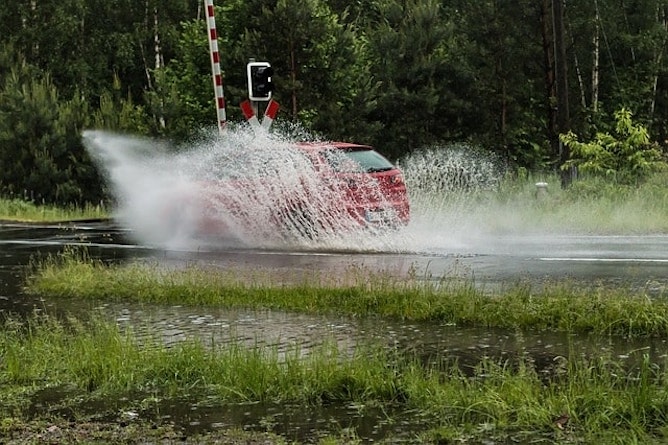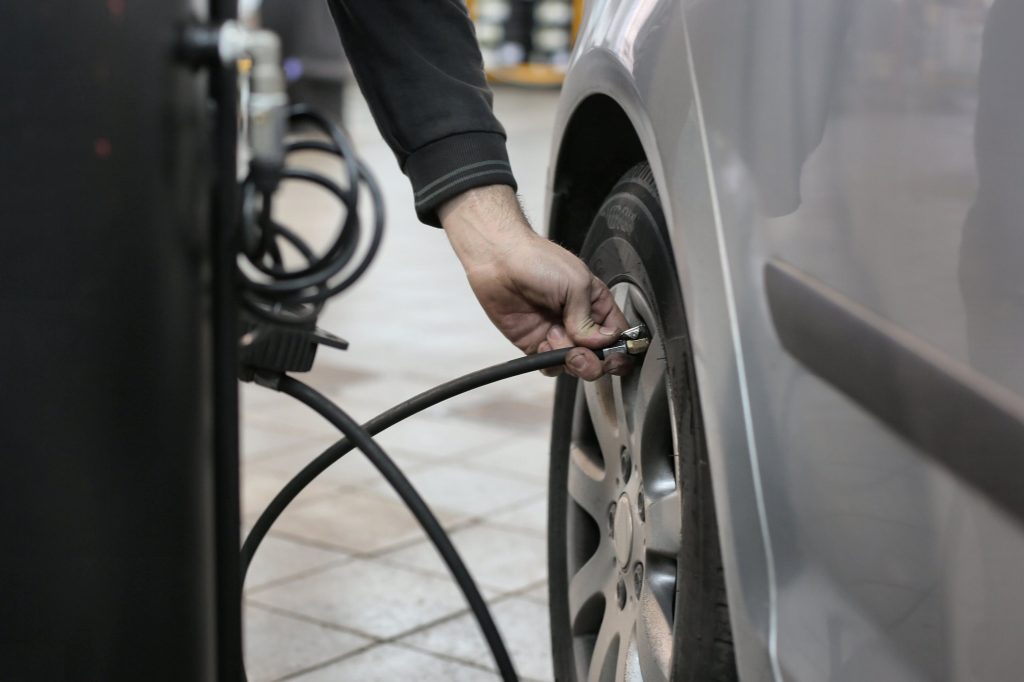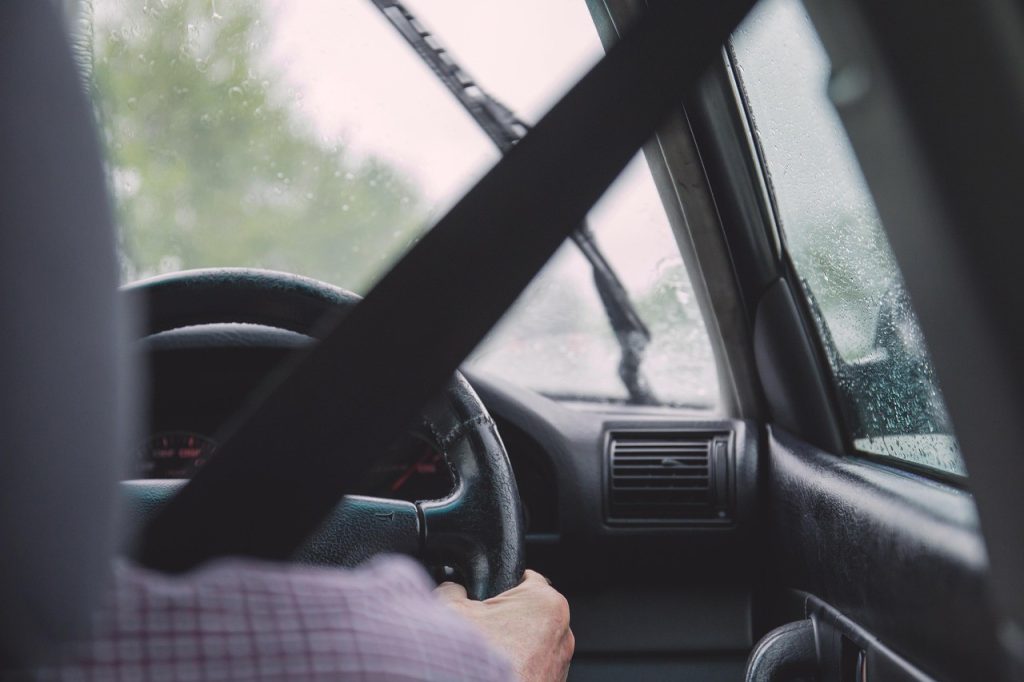Following a spell of heavy rain (Common in the UK), the surefire method to steer clear of driving through water is to remain indoors. While occasionally necessary during severe weather alerts like red warnings, there are times when venturing out becomes essential. However, traversing floodwater poses risks to both your vehicle’s mechanics and the potential for aquaplaning. We’re here to guide you through the dos and don’ts when faced with a loss of control and offer strategies to minimize the likelihood of such scenarios occurring.
What is aquaplaning?

Aquaplaning, also referred to as hydroplaning, occurs when water on the road separates your vehicle’s tires from the solid surface below. When your tires lose contact with the road, traction diminishes, leading to potential loss of control.
In the grip of aquaplaning, steering, acceleration, and braking effectiveness diminish, creating a sensation where your car’s rear end might skid or ‘fishtail,’ veering sideways regardless of your steering input.
What causes aquaplaning?
As you navigate through water, especially following a storm or intense rain, it tends to gather around your tires faster than your vehicle can expel it. Consequently, the water is forced beneath your tires, causing a separation between them and the road surface.
When are you most at risk of aquaplaning?

Aquaplaning becomes especially risky in locations where rainwater accumulates, including:
– Depressions in the road
– Low-lying regions
– Roads adjacent to expansive water bodies like rivers prone to overflowing
– Irregular road textures
Identifying standing water can be challenging, and encountering it at higher speeds heightens the risk of aquaplaning, as do inadequate tire conditions.
What does aquaplaning feel like?
Experiencing a vehicle aquaplaning provides a sense of losing control, akin to the sensation of skidding on ice. Recognizing aquaplaning as a driver happens when driving through water and noticing:
– Lighter-than-usual steering response
– Increased engine noise
– Sudden rev escalation without gear changes
– The rear end veering or swaying sideways
How do you avoid aquaplaning?
If there is an alternative to driving through flood water, you should take it. That might mean:
– Avoiding inessential journeys
– Going a different route
– Driving around large puddles
However, we know it isn’t always possible to stay high and dry. Thankfully, there are several things you can do to reduce the chances of losing control when you do come across surface water.
Good tyre tread
Keeping your tyres in good nick is one of the most important things you can do to avoid aquaplaning. Tread refers to how deep the grooves in your tyres are, and therefore how much they can grip the road. You probably know there’s a legal limit for tread—1.6mm for the inner three-quarters of your tyre. Any less and you’re not allowed to drive on the roads.
But there’s a recommended tread depth of at least 3mm. In wet weather, you’ll stop significantly faster with this level of tread than if you run your tyres down to the legal limit. Good tread can also remove quite a bit of water from your path, significantly reducing the chance of it getting forced underneath your wheels and creating problems.
Optimal tyre pressure

The right air pressure in your tyres is important to provide a balance between helping your car roll efficiently and maintaining good grip on the roads. You should check the pressure every three months or so—you can do this at many petrol stations—and pump them up if need be. Find the correct air pressure for your car in the vehicle handbook. It might tell you a different optimal pressure for winter, so set a reminder in your phone or a note in your planner, to take a look in the autumn months.
Appropriate Speeds
Although it’s always tempting to drive at the speed limit, remember that this is the maximum miles per hour you should ever travel on that road. You also need to take weather and traffic conditions into account and adjust your speed accordingly. Water just 2.5mm deep can cause you to aquaplane, and if you hit it at speed, your vehicle is less able to displace the water quickly enough—putting you further at risk.
So when there’s precipitation, or there’s been recent heavy rainfall, just remember to take things a bit slower. Where you are aware that you’re crossing water, you should drive really slowly—at about 3-4mph.
Use vehicle tracks
Helpfully, any vehicles you’re following will have had to navigate the flooding before you get to it. If you can drive on their tracks, some of the water will already have been pushed out the way, leaving your path a little clearer and safer.
How to react?

It’s best to know what you’re up against before you’re in a situation where you might panic. If you start aquaplaning you may be tempted to brake harshly—but that’ll just make things worse. Instead, ease off the accelerator slowly and keep your steering straight. When you start to regain traction, brake gently to slow your car down.
– Ease off accelerator
– Keep your wheel straight
– Brake gently when you get more control
What to do after driving through water?
Water can cause a lot of damage to your car, so you should always check your brakes after driving through water. To test them, drive slowly in a low gear while very gently applying pressure to your brake pedal. This will also help them dry out if they have gotten wet. It’s worth practicing this so you know how to do it and what it feels like.
If you stall after you’ve exited the water, this can indicate that your engine has sucked in some liquid. Don’t try to restart your car. Now’s the time to use your emergency breakdown cover, so that a mechanic can make your vehicle safe and road-ready again. Even if you don’t stall, keep listening out for changes to your engine noise, so you know whether it needs checking over. You should make sure that all your lights are fully functioning and you may also need to dry out the carpets in your footwells, to avoid issues like mould.
